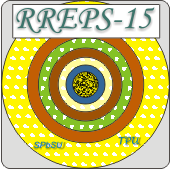Speaker
Viktor Vorobev
(Saint Petersburg State University)
Description
Three-dimensional and planar periodic structures made of thin conductors and having small period can be used for non-destructive diagnostics of charged particle bunches. Earlier we analysed radiation from bunches moving in volume wire metamaterial and along the boundary of such material. We also studied radiation of bunches moving in the presence of infinite planar structures. Now we consider a semi-infinite planar periodic structure made of thin parallel wires, which are placed orthogonally to the structure edge. We assume that particle bunch with negligible thickness and finite length moves parallel to the edge. The structure period is much less than the wavelength under consideration and the thickness of conductors is much less than the period. The electromagnetic influence of such grid is described by the known averaged boundary conditions. The radiation is represented by a surface wave with specific properties. This wave propagates along wires with speed of light in vacuum (if losses are negligible) without change of shape. Its structure allows determining the size of bunch. Properties of this surface wave are similar to the properties of volume radiation in the three-dimensional wire metamaterial. Some typical numerical results for bunches of various sizes and for various distances from the bunch to the edge structure are presented.
Author
Viktor Vorobev
(Saint Petersburg State University)
Co-authors
Andrey Tyukhtin
(Saint Petersburg State University)
Sergey Galyamin
(Saint Petersburg State University)
